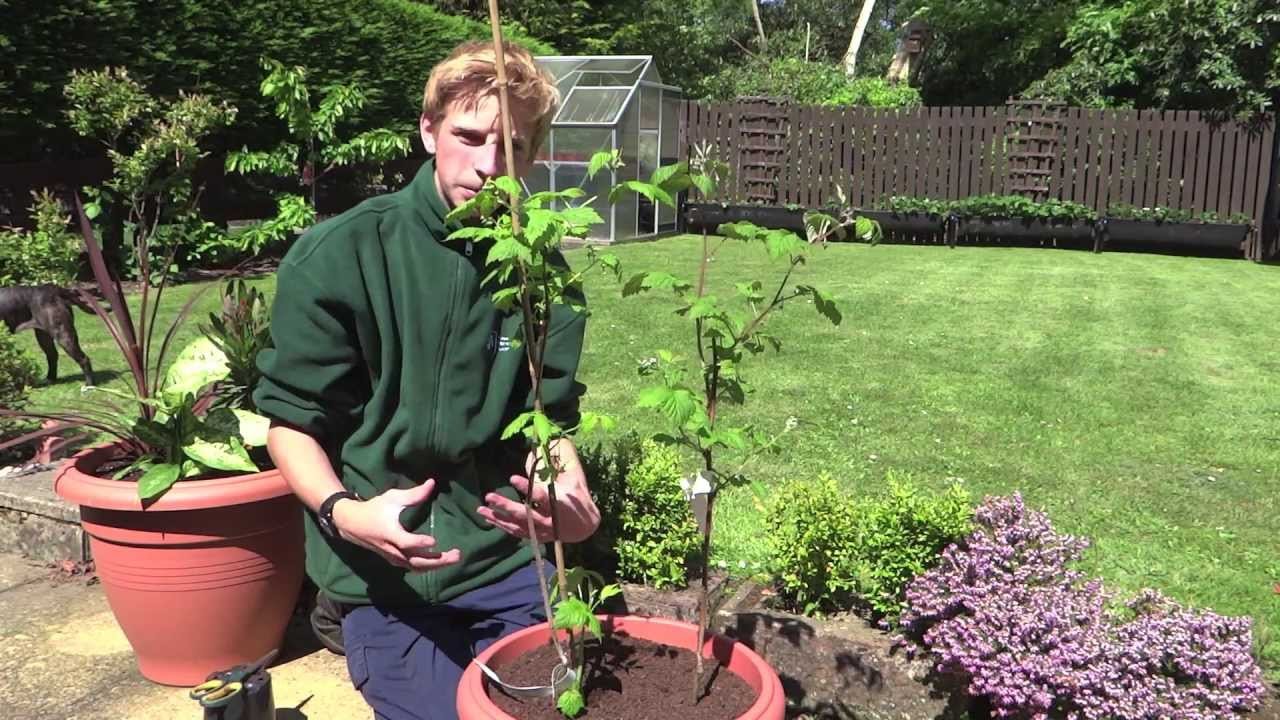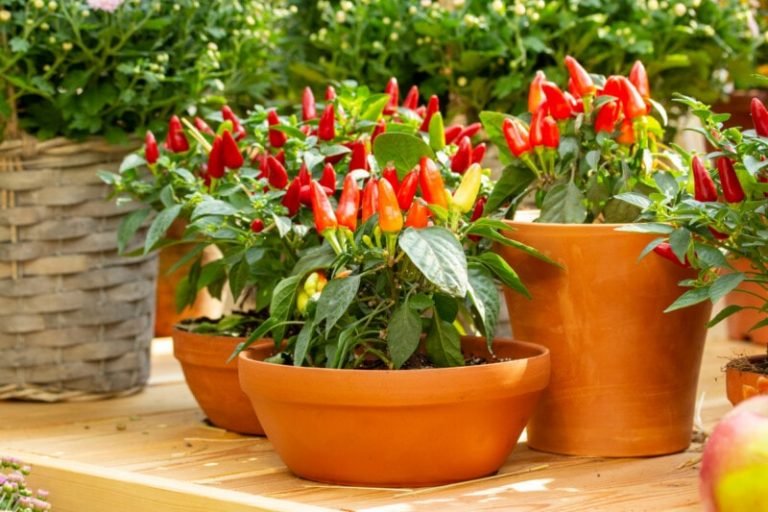how to grow raspberries in a pot – [Beginners Guide]
Are you a fan of fresh and juicy raspberries, but don’t have the space or resources for a large garden? Growing raspberries in pots is a fantastic way to enjoy the taste of these delicious berries right at home. Not only is it a fun and easy way to grow your own produce, but it also offers a range of benefits that make it an attractive option for many gardeners.
As someone who has successfully grown raspberries in pots for several years, I can confidently say that it’s a great way to add some color and flavor to your outdoor space. Growing raspberries in pots not only allows you to have complete control over the growing conditions, but it also provides an ideal solution for those with limited garden space or who are looking for a more portable option.
In this guide, we’ll cover everything you need to know about how to grow raspberries in a pot, from selecting the right variety to providing the best growing conditions. We’ll also discuss some common problems and how to troubleshoot them, so you can enjoy a healthy and thriving raspberry plant.
So, if you’re ready to get started on this exciting journey, grab a pot and let’s begin!
Pot or container selection
Raspberries can be grown in pots at home, but the type of pot needed will depend on the size of the raspberry variety and the available space. Here are some things to consider when selecting a pot for growing raspberries:
Size and capacity
Raspberry plants need plenty of room to grow, and they require a deep pot to accommodate their long roots. As a general rule, you should aim for a pot that is at least 18 inches (45 cm) in diameter and 20 inches (50 cm) deep. This will give your plants enough space to spread their roots and grow to their full potential. If you are growing a compact variety, a smaller pot may be suitable, but it’s best to choose a larger pot if space permits.
Construction
The construction of your pot is also important for the health of your raspberry plants. Here are some things to consider:
- Material: Choose a pot that is made of a durable material, such as ceramic, plastic, or fiberglass. Avoid pots made of metal or wood, as they may leach chemicals into the soil or rot over time. Make sure the pot is not painted with lead-based paint.
- Drainage: Make sure your pot has drainage holes in the bottom to allow excess water to drain out. Raspberry plants are sensitive to waterlogged soil, so good drainage is crucial for their growth. If your pot doesn’t have drainage holes, you can drill some yourself or add a layer of rocks or gravel in the bottom to help with drainage.
- Support: Raspberry plants can grow tall and heavy with fruit, so it’s important to choose a pot with sturdy construction that can support the weight of the plant. A trellis or support structure may also be needed to keep the plant upright.
- Style: You can choose a pot with a decorative design or a more utilitarian style, depending on your preference. Just be sure to choose a pot that is functional and well-suited for growing raspberries.
By choosing the right size and construction for your pot, you can give your raspberry plants the best chance at success. Make sure to provide them with adequate water and sunlight and monitor the soil for nutrient deficiencies or pests.
Make suitable soil mix
Raspberries can be grown in pots at home, but the type of pot needed will depend on the size of the raspberry variety and the available space. Here are some things to consider when selecting a pot for growing raspberries:
Size and capacity
Raspberry plants need plenty of room to grow, and they require a deep pot to accommodate their long roots. As a general rule, you should aim for a pot that is at least 18 inches (45 cm) in diameter and 20 inches (50 cm) deep. This will give your plants enough space to spread their roots and grow to their full potential. If you are growing a compact variety, a smaller pot may be suitable, but it’s best to choose a larger pot if space permits.
Construction
The construction of your pot is also important for the health of your raspberry plants. Here are some things to consider:
- Material: Choose a pot that is made of a durable material, such as ceramic, plastic, or fiberglass. Avoid pots made of metal or wood, as they may leach chemicals into the soil or rot over time. Make sure the pot is not painted with lead-based paint.
- Drainage: Make sure your pot has drainage holes in the bottom to allow excess water to drain out. Raspberry plants are sensitive to waterlogged soil, so good drainage is crucial for their growth. If your pot doesn’t have drainage holes, you can drill some yourself or add a layer of rocks or gravel in the bottom to help with drainage.
- Support: Raspberry plants can grow tall and heavy with fruit, so it’s important to choose a pot with sturdy construction that can support the weight of the plant. A trellis or support structure may also be needed to keep the plant upright.
- Style: You can choose a pot with a decorative design or a more utilitarian style, depending on your preference. Just be sure to choose a pot that is functional and well-suited for growing raspberries.
By choosing the right size and construction for your pot, you can give your raspberry plants the best chance at success. Make sure to provide them with adequate water and sunlight and monitor the soil for nutrient deficiencies or pests.
How to plant the raspberries?
Here is a step-by-step guide for planting raspberries in a pot at home:
Step 1: Choose the right pot
Choose a pot that is at least 18 inches in diameter and 12 inches deep, as raspberries have a larger root system than cherry tomatoes. The pot should have drainage holes in the bottom to allow excess water to escape.
Step 2: Add soil and fertilizer
Fill the pot with a high-quality potting mix, leaving enough space at the top for watering. Mix in some balanced fertilizer to help provide essential nutrients for the raspberries.
Step 3: Plant the raspberry bush
Select a healthy raspberry bush that has not yet started to sprout leaves, as this will allow it to adapt better to its new environment. Dig a hole in the center of the pot that is deep enough to accommodate the roots of the raspberry bush. Carefully place the bush in the hole, making sure that it is level and the roots are not bent or curled.
Step 4: Add support
Raspberries can grow tall and may need support, especially if they are bearing fruit. Insert a trellis or stake in the pot at the time of planting so that the raspberry bush has support as it grows.
Step 5: Water and maintain
Water the raspberry bush regularly to keep the soil moist but not waterlogged. Avoid overwatering as this can cause root rot. Provide full sun to the plant by placing the pot in a spot that receives at least 6 hours of sunlight daily. Prune the raspberry bush in the late winter or early spring to encourage healthy growth and fruit production.
By following these steps, you can successfully plant raspberries in a pot at home and enjoy a bountiful harvest of this delicious fruit.
How to care for raspberries?
Planting raspberries in a pot can be a great way to enjoy fresh berries at home. Here’s a guide on how to care for raspberries in a pot:
Watering Requirement
Raspberries in pots require consistent moisture, but not waterlogged soil. Water the raspberry plant deeply once or twice a week, depending on the weather and soil conditions. Check the soil moisture level by sticking your finger about an inch into the soil. If it feels dry at that depth, it’s time to water. Avoid overhead watering as it can lead to disease.
Fertilizer Requirement
Raspberries benefit from regular feeding with a balanced fertilizer, such as a 10-10-10 formula. Apply the fertilizer according to the package instructions every 4-6 weeks during the growing season. Alternatively, you can use a slow-release fertilizer or compost to provide a steady supply of nutrients over time.
Sunlight Needs
Raspberries need at least 6 hours of direct sunlight per day to grow and produce fruit. Choose a spot in your garden or patio that gets enough sun, and make sure to move the pot around to follow the sun if needed. If you don’t have a sunny spot outdoors, you can also grow raspberries in a sunny window indoors using a grow light.
Pruning & Training
Pruning and training raspberries are important to maintain the health of the plant and maximize fruit production. In late winter, prune the raspberry plant by removing any dead, diseased or damaged canes, as well as any canes that are thinner than a pencil. During the growing season, remove any new canes that emerge outside the pot to prevent the plant from becoming overcrowded. You can train the remaining canes to a stake or trellis to support their growth and prevent them from falling over.
Other Care
In addition to watering, fertilizing, and pruning, there are a few other things you can do to care for your raspberry plant:
- Mulch the soil around the plant to help retain moisture and suppress weeds.
- Protect the plant from extreme temperatures by moving the pot to a shaded area during the hottest part of the day.
- Watch out for common raspberry pests such as aphids, spider mites, and Japanese beetles. If you notice any issues, take action immediately to prevent them from spreading.
- Harvest the berries when they are fully ripe, usually when they turn red or black.
With proper care and attention, your raspberry plant in a pot can produce a bountiful harvest of delicious, homegrown berries.
Common problems
Other Issues
Apart from pests, insects, diseases, and poor production, there are some other issues that raspberries grown in pots may face, including:
- Root-bound plants: When the roots of the plant become overcrowded in the pot, it can lead to stunted growth and poor fruit production. To prevent this, it’s important to transplant your raspberry plant into a larger pot or prune the roots as needed.
- Environmental stress: Extreme temperatures, humidity, and wind can all cause stress to your raspberry plants. To mitigate this, consider moving your pot to a more sheltered location, providing shade during the hottest part of the day, and ensuring adequate ventilation.
- Overfertilization: While fertilizing your raspberry plants is important, overdoing it can lead to excessive foliage growth at the expense of fruit production. Be sure to follow the package instructions for your chosen fertilizer, and avoid applying it too frequently.
- Overwatering: Raspberries don’t like to be in overly wet soil, which can lead to root rot and other issues. Make sure to allow the soil to dry out between waterings and avoid letting water sit in the saucer under the pot.
- Poor drainage: If your pot doesn’t have adequate drainage holes, it can lead to waterlogged soil and root rot. Make sure your pot has plenty of drainage holes and consider adding a layer of gravel or sand at the bottom to improve drainage.
By being aware of these potential issues and taking steps to prevent them, you can help ensure that your raspberries grow and thrive in their pot at home.
Harvesting & storing homegrown raspberries
To harvest and store homegrown raspberries, it is important to know when they are ready for picking. Raspberries are ready for harvest when they are fully ripe, which is usually when they are a deep, dark red color. The berries should also easily come off the plant when gently pulled.
Here are the steps for harvesting and storing raspberries:
Choose the right time of day to harvest: Raspberries are best harvested in the morning when they are still cool and have not been exposed to direct sunlight for an extended period of time.
Pick the berries: Gently pull the berries off the plant with your fingers. Be careful not to squeeze or crush the berries, as this can damage them.
Store the berries: Raspberries are delicate and should be consumed or stored as soon as possible after harvesting. If you plan to store the berries, place them in a shallow container or tray lined with paper towels to absorb any excess moisture. Store the container in the refrigerator and use the berries within a few days.
Freeze the berries: If you have a large harvest of raspberries, you can freeze them for later use. Wash and dry the berries, then place them on a baking sheet and freeze them until solid. Transfer the frozen berries to a resealable bag and store them in the freezer for up to 6 months.
Check for signs of spoilage: Before consuming or using the berries, check for signs of spoilage such as mold or an off odor. Discard any berries that appear to be spoiled or have an unpleasant smell.
By following these steps, you can harvest and store your homegrown raspberries for later use or enjoy them fresh.
Growing raspberries in container – Conclusion
Congratulations on learning how to grow raspberries in a pot! Growing raspberries in a container is a fantastic option for those who don’t have a lot of space but still want to enjoy the sweet and juicy taste of homegrown raspberries.
By following the steps outlined in this guide, you can successfully grow and care for your own raspberry plant in a pot. From selecting the right container and soil mix, to planting and pruning your raspberry plant, and caring for it throughout the year, you now have the knowledge and skills needed to grow a healthy and productive raspberry plant.
Homegrown raspberries are a delicious and nutritious fruit that can be enjoyed fresh or used in a variety of recipes. By growing your own raspberries, you can have access to fresh, flavorful fruit that you can be proud to share with your family and friends.
So why not give it a try? With a little bit of effort and patience, you can successfully grow a raspberry plant in a pot and enjoy the many benefits of homegrown fruit. We hope this guide has inspired you to get started and wish you the best of luck in your raspberry-growing endeavors!







